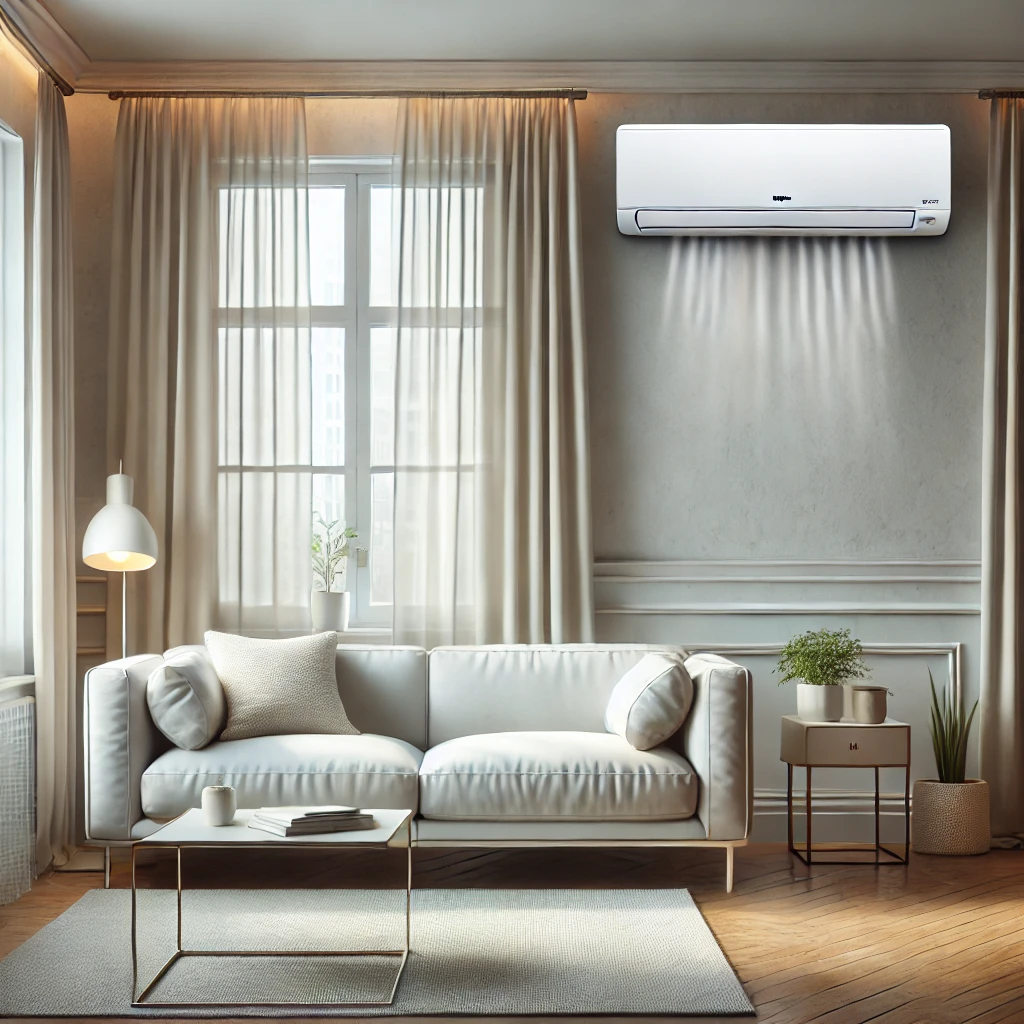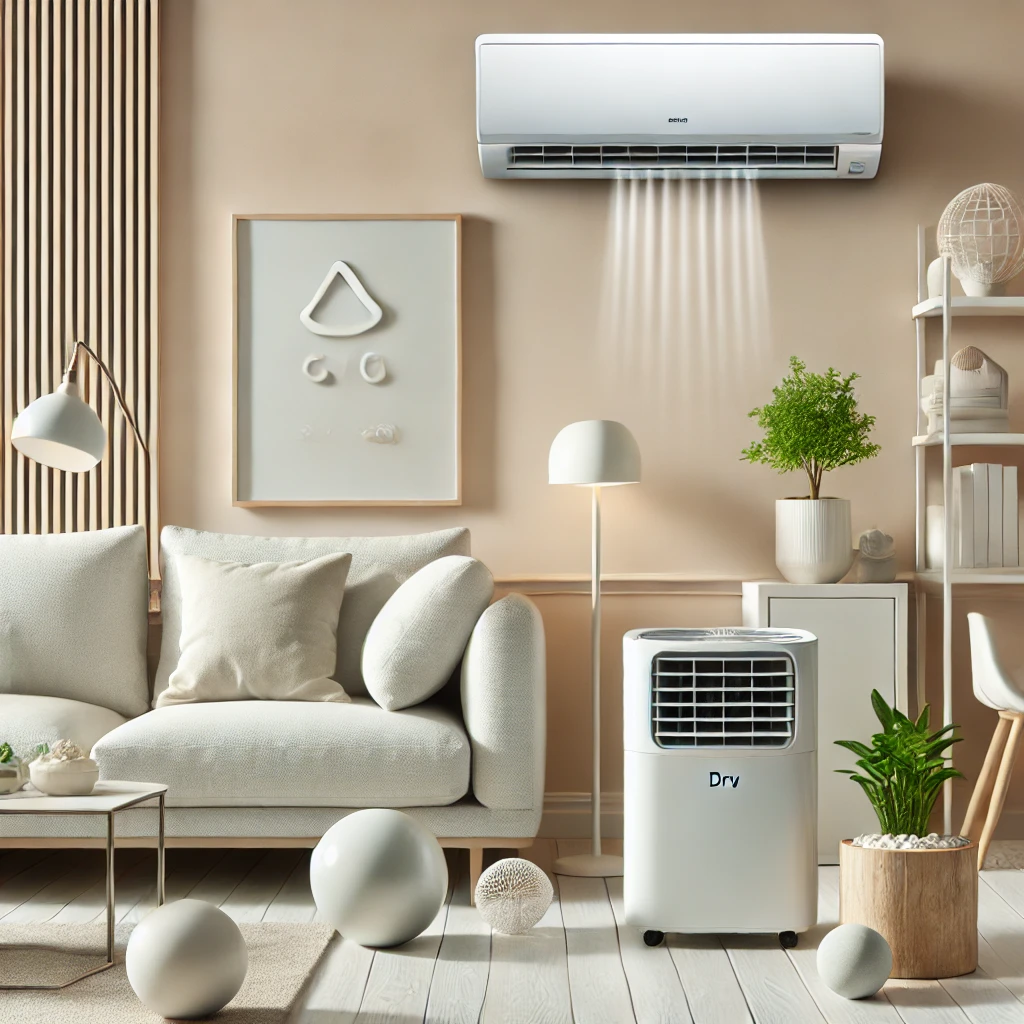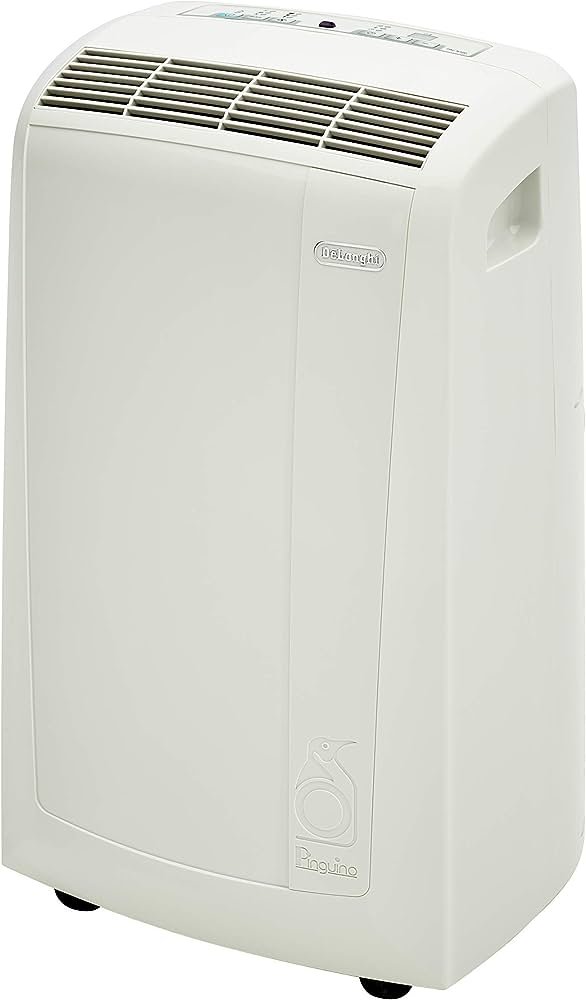What is The Dry Mode on Your Air Conditioner? Discover the Power of Dehumidification!
The Dry mode in your Air conditioner is ideal for removing the excess moisture from an indoor space so as to ensure more comfortable surroundings. Ensure you learn the vast modes of your air conditioner to keep an ideal indoor environment.
One of these includes a Dry mode that is essentially an intelligent dehumidifier. Excessive humidity increases the overall indoor dampness and when it gets out of balance it can lead to a mold and mildew problem. The Dry mode, on the other hand, is designed to rid the air of excess moisture to the point that it dries rather than humidifies.
In this article, we will talk about the dry mode function in detail, how it work, when to use it and how is it beneficial for your comfort and air quality. In the end, you get to know more of this mode and its use to maximise in creating a most comfortable indoor setting.
How Does the Dry Mode Work?
The Dry Mode function in air conditioners plays a crucial role in improving indoor comfort by reducing excess moisture. Below is a detailed explanation of how it operates.
Key Points
- Purpose of Dry Mode
- Removes excess moisture from the air, making the indoor environment more comfortable, especially in humid conditions.
- How It Works
- Operates at the air conditioner’s lowest fan speed, allowing air to pass through the evaporator coil for a longer period.
- The coil cools down, causing moisture in the air to condense into liquid.
- The condensed liquid (water vapor) is collected and drained away.
- Temperature Settings
- Typically set a few degrees warmer than the cooling mode to balance dehumidification and temperature control.
- Prevents overcooling, which can lead to increased humidity.
- Best Use Scenarios
- Ideal for high-humidity zones or damp environments.
- Reduces humidity without significantly lowering the room temperature, creating a comfortable indoor atmosphere.
Table
| Aspect | Description |
| Fan Speed | Operates at the lowest speed to enhance moisture removal efficiency. |
| Evaporator Coil | Condenses water vapor into liquid, which is collected and drained. |
| Temperature Settings | Slightly warmer than cooling mode to prevent overcooling and maintain comfort. |
| Best Use | Suitable for humid or damp areas, ensuring comfort without drastic temperature changes. |
Video Explanation
For a more in-depth understanding, check out this video:
Buzzfeed – How Dry Mode Works
Copyright-Free Image
Image Credit: Unsplash
Benefits of Using the Dry Mode
The Dry Mode on your air conditioner offers a range of benefits, not only improving your indoor comfort but also enhancing the overall quality of your living environment.
- Prevents Mold and Mildew Growth
- By removing excess moisture, Dry Mode creates a less favorable environment for mold and mildew, reducing the risk of these harmful microorganisms growing indoors.
- Improves Indoor Air Quality
- Reduces humidity levels, helping to eliminate conditions that promote allergens and dust mites, making the air cleaner.
- Beneficial for individuals with allergies or respiratory conditions, as it lowers the presence of allergens.
- Energy and Cost Savings
- Air conditioners use less energy in dehumidification mode compared to full cooling mode.
- By using the Dry Mode, you can reduce your electricity bills while still maintaining a comfortable indoor environment.
The Dry Mode not only enhances comfort but also promotes a healthier and more energy-efficient living space.
Factors to Consider When Using the Dry Mode
Using the Dry Mode on your air conditioner can be highly effective in reducing humidity, but there are certain factors to consider for optimal performance and comfort. Here’s a guide to ensure you use Dry Mode effectively.
- Weather Conditions for Dry Mode
- Best used in warm and humid weather conditions.
- Ideal temperature range: 23-27°C.
- Relative humidity should be at least 60% for effective dehumidification.
- Duration of Use
- Typically, using Dry Mode for a couple of hours is sufficient to remove excess moisture.
- Overuse may result in excessively dry air, leading to discomfort or potential respiratory issues.
- Impact of Climate
- The frequency and duration of using Dry Mode can vary based on the prevailing climate.
- Adjust your use depending on the humidity and temperature levels in your area.
Things to Remember While Using Dry Mode
- Avoid Overuse
- Prolonged use of Dry Mode can cause the air to become too dry, which could result in discomfort, including dry skin or breathing difficulties.
- Ideal Conditions
- Dry Mode works best in environments with high humidity levels (above 60%) and moderate temperatures.
Tips for Maximizing the Effectiveness of the Dry Mode
- Close Windows and Doors
- Keep windows and doors closed to prevent moisture from entering the room and interfering with the dehumidification process.
- Use Blinds or Curtains
- Block sunlight by closing blinds or curtains, which helps regulate the temperature and reduces humidity.
- Regular Air Conditioner Maintenance
- Clean or replace filters regularly and inspect for any issues such as low refrigerant levels. Proper maintenance ensures the air conditioner performs efficiently.
Table
| Factor | Description |
| Ideal Weather Conditions | Best in warm and humid environments (23-27°C, humidity above 60%). |
| Duration of Use | Use for a few hours to avoid excessive drying of the air. Overuse may lead to discomfort or respiratory issues. |
| Climate Impact | Adjust usage based on local humidity and temperature levels. |
| Maintenance | Regular cleaning and servicing of the air conditioner ensure it performs at its best. |
By understanding these factors and following the tips above, you can maximize the effectiveness of Dry Mode and enjoy a more comfortable and healthier living environment.
Alternatives to the Dry Mode
If you’re looking for alternatives to using the Dry Mode on your air conditioner to reduce indoor humidity, several options are available. These methods can help create a more comfortable environment in your home without relying solely on your air conditioner.
Points
- Standalone Dehumidifiers
- Portable devices specifically designed to remove excess humidity from the air.
- Can be placed in areas of high humidity, such as basements, bathrooms, or closets.
- Ideal for targeted dehumidification in specific rooms or spaces.
- Quick Dehumidifying Techniques
- Ventilation: Open windows or use exhaust fans to improve air circulation and reduce moisture.
- Natural Dehumidifiers: Use substances like salt or charcoal placed in bowls around the house to absorb humidity.
- Fix Leaks: Address issues like leaky pipes or water seepage to prevent excess moisture in your home.
These alternatives can complement the Dry Mode or serve as standalone solutions for managing humidity and maintaining a more comfortable indoor environment.
Frequently Asked Questions For What Is The Dry Mode On My Air Conditioner
Here are some commonly asked questions about the Dry Mode on air conditioners and how it works to reduce indoor humidity and improve comfort.
- What Is the Dry Mode on My Air Conditioner?
- The Dry Mode lowers humidity in a room without adjusting the temperature.
- It cools the air and removes excess moisture, making the space more comfortable.
- Particularly useful in humid regions or during the monsoon season.
- How Does the Dry Mode Work on an Air Conditioner?
- Dry Mode dehumidifies the room by running the air conditioner in a way that reduces moisture without cooling the space significantly.
- It helps prevent mold and mildew growth, particularly during wet or rainy seasons.
- Can also speed up the drying of indoor laundry.
- When Should I Use the Dry Mode on My Air Conditioner?
- Use Dry Mode whenever humidity levels are high, such as during rainy or humid weather.
- However, avoid using it constantly to prevent overcooling during the cooling season or excessive moisture removal during heating seasons.
- Frequent use can lead to discomfort and inefficient operation.
- Can I Use the Dry Mode on My Air Conditioner All the Time?
- Dry Mode can be used when humidity is high, but it shouldn’t be used continuously.
- Overuse can lead to overcooling or excessive drying, both of which can cause discomfort.
- It’s best to use Dry Mode intermittently to avoid inefficiency and discomfort.
The Dry Mode is an effective tool for managing humidity, but it should be used thoughtfully and in moderation to maintain comfort and efficiency in your space.
Conclusion
Do you use the dry mode on your air conditioner? This is ideal in areas with high humidity levels to prevent mold from growing, and results in a cooler indoor environment.
By knowing how to dry mode AC, you can improve the efficiency and lifespan of your air conditioner all while staying in a cooler and drier place.









полный аудит сайта стоимость http://www.prodvizhenie-sajtov15.ru/ .
вывод из запоя с выездом ростов вывод из запоя с выездом ростов .
частная скорая помощь №1 частная скорая помощь №1 .
нарколог на дом анонимно http://narkolog-na-dom-krasnodar17.ru/ .
нарколог на дом круглосуточно http://narkolog-na-dom-krasnodar16.ru .
anonymous story anonymous story .
франшиза 2024 франшиза 2024 .
Быстрая покупка диплома старого образца: возможные риски
Приобретение диплома ПТУ с сокращенной программой обучения в Москве
купить диплом о полном среднем russa-diploms.ru .
купить школьный аттестат купить школьный аттестат .
продамус промокод скидка продамус промокод скидка .
Быстрая покупка диплома старого образца: возможные риски
saturn.forumex.ru/viewtopic.php?f=19&t=283
промокод Платежный модуль геткурс http://www.platezhnyj-modul-getkurs-promokod.ru .
купить диплом пту в москве many-diplom77.ru .
My brother suggested I might like this blog. He was entirely right. This post truly made my day. You can not imagine just how much time I had spent for this info! Thanks!